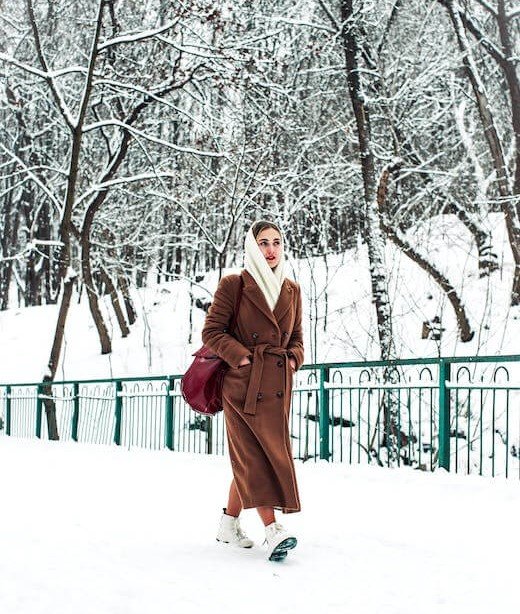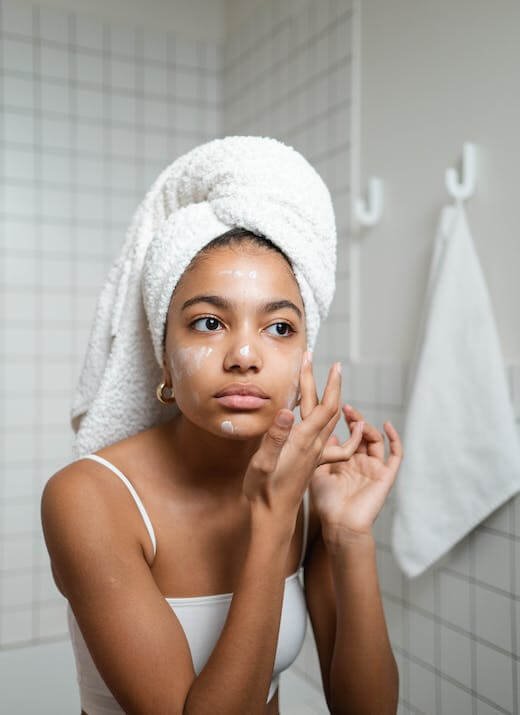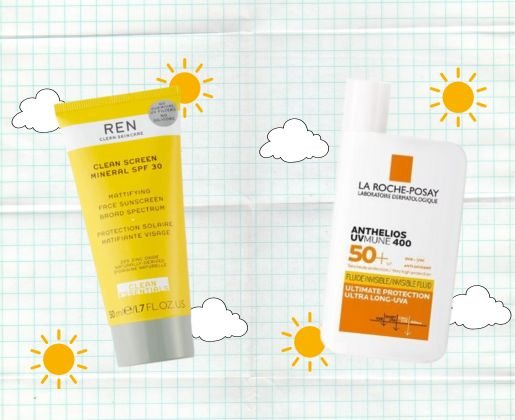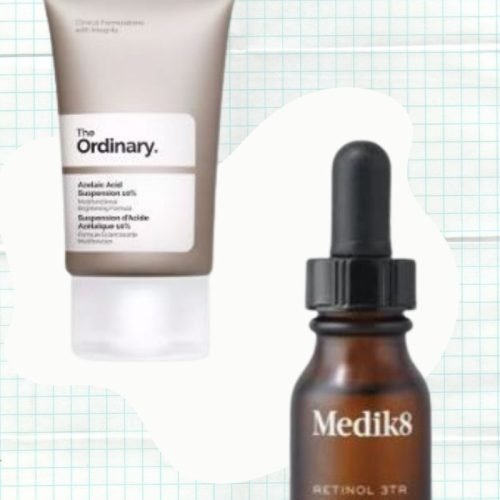Sunscreen is the crucial step of a daily skincare routine as it protects your skin from the sun’s harmful UV rays. You need to apply sunscreen every day, as skipping it leads to premature ageing and raises the risk of skin cancer.

Image: Anaghan Km/Pexels
It becomes second nature to slather on sunscreen in hotter weather to avoid painful sunburn. But did you know you can incur sun damage all year round, even in the winter season? UV rays are always present even if you cannot see the sun, so choose the best sunscreen for winter to keep your skin healthy and protected.
- Why Do I Need to Wear Sunscreen in the Winter?
- What is Ultraviolet Radiation?
- The Three Types of UV Rays?
- How Much Sunscreen Should I Apply?
- How Much Sunscreen Should I Apply on My Face ?
- How To Do The Two-Finger Sunscreen Method
- How Often Should I Re-apply Sunscreen During Winter?
- What Sun Protection Factor (SPF) Factor should I Use in Winter?
- Mineral vs Chemical Sunscreen: What’s the Difference?
- What is Mineral Sunscreen? (Physical Sunscreen)
- What is Chemical Sunscreen?
- The Best Sunscreen for Winter for Oily and Acne Prone Skin
- The Best Sunscreen for Winter for Dry Skin
- The Best Sunscreen for Winter for Sensitive Skin
- The Best Sunscreen for Skiing and Winter Sports
- Different Forms of Sunscreen and Their Benefits
- Frequently Asked Questions
Why Do I Need to Wear Sunscreen in the Winter?
Wearing sunscreen is an absolute must, no matter the time of year or weather! You might think you need sunscreen only on sunny days, but that’s not the case.
Ultraviolet Radiation is still present in the darker winter months, whether you can see the sun or not, and when it enters our skin cells, it can harm our DNA, increasing skin cancer risks.
Extensive exposure to the winter sun, even in cold weather, is still harmful to your skin, so you should apply sunscreen every morning and wear protective clothing such as gloves, hats and earmuffs in cold temperatures.

Board-certified dermatologist Dr Seemal R. Desai gave an expert opinion to the American Academy of Dermatology Association, advising to wear sunscreen and protective clothing, no matter skin tone or type, adding, “This is especially important for those with a personal or family history of skin cancer.”
What is Ultraviolet Radiation?
UV radiation is produced by the sun and sunbeds and is split into three categories: UVA, UVB, and UVC, also known as UV rays. The best sunscreen for winter is a broad-spectrum sunscreen which protects from both UVA and UVB rays.
Manhattan Dermatology says on its blog, “Everyone should use a broad-spectrum sunscreen that protects against both UVA and UVB rays and has at least SPF 30 protection, which blocks about 97% of harmful UV rays.”
Ultraviolet ray levels vary and are at their peak during the summer months but are present all year round. The power of the sun’s UV rays is lower in the winter but still strong enough to burn and damage your skin, so you still need to wear sunscreen.
The Three Types of UV Rays?
Ultraviolet A Rays (UVA Rays) are the primary causes of wrinkles, age spots, and sagging and contribute to the risk of skin cancer.
Ultraviolet B Rays (UVB Rays) are at their peak during summer and cause sunburn and skin cancer.
Ultraviolet C Rays (UVC Rays) cause minimal harm as the rays do not reach the Earth’s surface as they are absorbed entirely by the atmosphere.
How Much Sunscreen Should I Apply?
-
You should apply sunscreen at least 20-30 minutes before you go outside.
-
The recommended amount of sunscreen for exposed skin on the face or body is two milligrams or the equivalent of a shot glass per square centimetre.
-
Don’t neglect behind your ears, neck and hairline; dermatologists have noted these are the common spots for premature ageing and cancerous cells.
-
Apply sunscreen to any other parts of the skin exposed to the sun, including your hands, as they are vulnerable to sunspots and skin cancer.
How Much Sunscreen Should I Apply on My Face ?
A popular method of achieving sufficient protection is to use the “two-finger sunscreen rule”. This simple method ensures you apply a sufficient amount required for maximum sun protection.

How To Do The Two-Finger Sunscreen Method
-
Choose a broad-spectrum sunscreen with an SPF (sun protection of at least 30.)
-
Dispense two finger lengths of sunscreen onto your index and middle fingers.
-
Dot the sunscreen on your forehead, cheeks, and nose, and spread it evenly, not forgetting the exposed parts of your neck.
-
Reapply throughout the day.
Sun exposure is one of the primary causes of a damaged skin barrier, the outermost layer that protects and maintains hydration. When the barrier gets damaged, skin can become dry and itchy and could lead to further issues.
It is possible to repair a damaged skin barrier, although skincare brand Paula’s Choice says, “It can take anywhere from a couple of weeks up to 6 months to get it back to its protective best.” The best method is prevention, so apply sunscreen daily and reapply for optimal protection.
**Before applying a new product to your face and skin, always perform a patch test to confirm it doesn’t irritate or cause an allergic reaction.**
How Often Should I Re-apply Sunscreen During Winter?
Your skin is still at risk of sun damage during the colder months, even on cloudy days in winter. Nivea says, “Sunscreen should always be reapplied at least every two hours, irrespective of the water resistance of the sunscreen.”
Sunscreen becomes less effective after this time, and swimming or sweating at the gym can decrease the product’s effectiveness, meaning reapplication is essential.
Winter sports such as skiing and hiking are at the highest risk of skin damage due to the high altitudes where UV levels can increase by around 6% per 1000 feet. Snow reflects UV rays, so it’s important to reapply sunscreen frequently and use goggles with UV protection when skiing to protect your eyes.
What Sun Protection Factor (SPF) Factor should I Use in Winter?
The SPF number on the sunscreen tells you how long it might take your skin to burn after applying it. For example, wearing SPF 30 would take you 30 times longer to burn than if you weren’t wearing sunscreen. The percentage of UV rays blocked by each SPF is listed below:
-
SPF 15 blocks up to 93% of UVB rays
-
SPF 30 blocks 97% of UVB rays
-
SPF 50 blocks 98% of UVB rays
A minimum of SPF 30 is advisable for everyone, and the best sunscreen for winter should be a broad-spectrum sunscreen, which protects the skin from UVA and UVB rays. Some sunscreens don’t protect from UVA, so always check the label before you buy.
Mineral vs Chemical Sunscreen: What’s the Difference?
There are two basic types of sunscreens, mineral and chemical, and each uses different active ingredients to protect your skin. The main difference between the two types is how they handle UV rays, and they both have advantages.

There are plenty of sunscreen options to choose from, and choosing the best sunscreen for winter all depend on personal preference, skin type, and any skin issues.
What is Mineral Sunscreen? (Physical Sunscreen)
Mineral sunscreens sometimes referred to as physical sunscreens contain the active ingredients zinc oxide or titanium dioxide. These ingredients form a physical barrier on the skin by reflecting the sun’s rays. Mineral sunscreen is ideal for sensitive skin but tend to have a heavier consistency.
Pros and Cons of Mineral Sunscreens
PROS
-
Prevents UVA damage, such as wrinkles, fine lines, and dark spots
-
Safer for the environment
-
Gets to work immediately after application
CONS
-
Less easy to apply than chemical sunscreens
-
Can leave behind a white cast after application
What is Chemical Sunscreen?
Chemical sunscreens work like a sponge by absorbing UV rays and converting them into heat, which is then released from the skin. They are popular choices as they come in more lightweight formulas than mineral sunscreens.
Pros and Cons of Chemical Sunscreens
PROS
-
Lighter formulas, such as a gel or spray format
-
Absorb faster into the skin
-
Ideal to wear alone or with makeup
-
More resistant to water and sweat, good for swimming and sports.
-
Generally cheaper than mineral sunscreens
CONS
-
Can irritate the skin and cause allergic reactions.
-
Some of their ingredients are harmful to marine life and coral reef ecosystems
-
It takes more time to get to work, so apply in advance of going outside.
When choosing the best sunscreen for winter to suit you, remember both types protect your skin from the sun, so it is entirely based on your preferences whether you choose a mineral or a chemical sunscreen.
The Best Sunscreen for Winter for Oily and Acne Prone Skin
If you have acne or oily skin, opt for a non-comedogenic formula which won’t block your pores and a matte finish. Oil-free and lightweight lotions or gel will work better than a heavier cream for this skin type.
**No affiliate links were used**
The Best Sunscreen for Winter to Protect Your Skin
The Best Sunscreen for Winter for Dry Skin
If you have dry skin, look for sunscreens with hydrating ingredients such as hyaluronic acid, glycerine, or ceramides.
Good Sunscreens for Dry Skin
The Best Sunscreen for Winter for Sensitive Skin
For sensitive skin, choose a mineral sunscreen as it causes less irritation and go with one that is fragrance-free and hypoallergenic.
Good Sunscreens for Sensitive Skin
The Best Sunscreen for Skiing and Winter Sports
Waterproof sunscreen is the ideal choice if you are high up in the mountains skiing or working up a sweat hiking,

Good Sunscreens for Skiing and Winter Sports
Don’t forget a lip balm with SPF, such as the Solait Lip Sun Protection Stick with SPF30
Remember to do a patch test before applying sunscreen on your face and body. Consult with a dermatologist if you have any concerns or specific skin conditions.
Different Forms of Sunscreen and Their Benefits
Sunscreen as a lotion was the only choice on the market for years; times have progressed, and retailers now stock a variety of formulas.
Options include sprays, sticks, roll-ons, and even powder formats, meaning there’s a sunscreen style to suit everyone.
When choosing the best sunscreen for winter to suit you, remember the most important thing is to apply it correctly to ensure maximum protection.
Benefits of Powder Sunscreen
Most powder sunscreens are mineral-based and are convenient for people on the go. Be generous with your application, as a light coating won’t provide sufficient protection.
Benefits Include:
-
Can be worn alone on your skin or over your makeup
-
Non-greasy texture
-
Doesn’t leave a white cast
-
Blends easily and mattifies the skin
-
Compact and portable
Benefits of a Sunscreen Stick
Sunscreen sticks offer a quick way to protect your skin without the mess of a lotion. Apply even overlapping strokes on the body and opt for a white-coloured formula so you don’t miss any spots.
Benefits Include:
-
Create less mess than lotions and sprays
-
Leakproof
-
Targets specific areas that need more protection
-
Some are suitable to be applied over-makeup
Benefits of a Spray Sunscreen
Spray sunscreens make it easier to reach hard-to-reach areas but be mindful as many people don’t apply a thick enough layer for maximum protection.
Benefits Include:
-
Convenient and easy to use
-
Applies quicker than lotions
-
Lightweight with a non-greasy formula
-
Quick absorption
-
Ideal for outdoor activities such as hiking as easy to reapply
In a nutshell, we all need to apply sunscreen daily, even in winter. Don’t let cloudy skies or snow trick you into skipping this essential step that keeps your skin looking its best and helps prevent skin cancer.
Frequently Asked Questions
Do I Need to Wear Sunscreen Inside?
You should still wear sunscreen whether you are inside or out regardless of the weather conditions. If you sit by a window at work or travel by car, your skin will absorb UV rays, so incorporate sunscreen into your morning routine and reapply throughout the day for maximum protection.
Should I Apply Moisturiser After Sunscreen?
Sunscreen is the last step of your skincare regime before you apply make-up. Applying your moisturiser after your moisturiser can mess with the effectiveness of your SPF.
Is the SPF in my Make Up or Moisturiser Enough?
SPF in make-up and skincare tends to have less than SPF 30, which might not provide adequate protection. The best sunscreen for winter should be a minimum of SPF 30 and a broad-spectrum sunscreen. Think of the SPF in your skincare as a bonus, but always double up with a sunscreen.
Does Sunscreen Expire?
Yes! Sunscreens have expiry dates, and most sunscreens last up to three years unopened, and six to twelve months after opening. The ingredients in expired sunscreen won’t be effective at protecting your skin if the sunscreen has expired.
Disclaimer: All the content published on www.thestylecadet.com is solely for information purposes. It is not a substitute for professional medical advice, diagnosis, or treatment. Always consider seeking the advice of your doctor, qualified healthcare provider or dermatologist. The information, suggestions, or remedies mentioned in this article are provided without warranty of any kind, whether expressed or implied.


